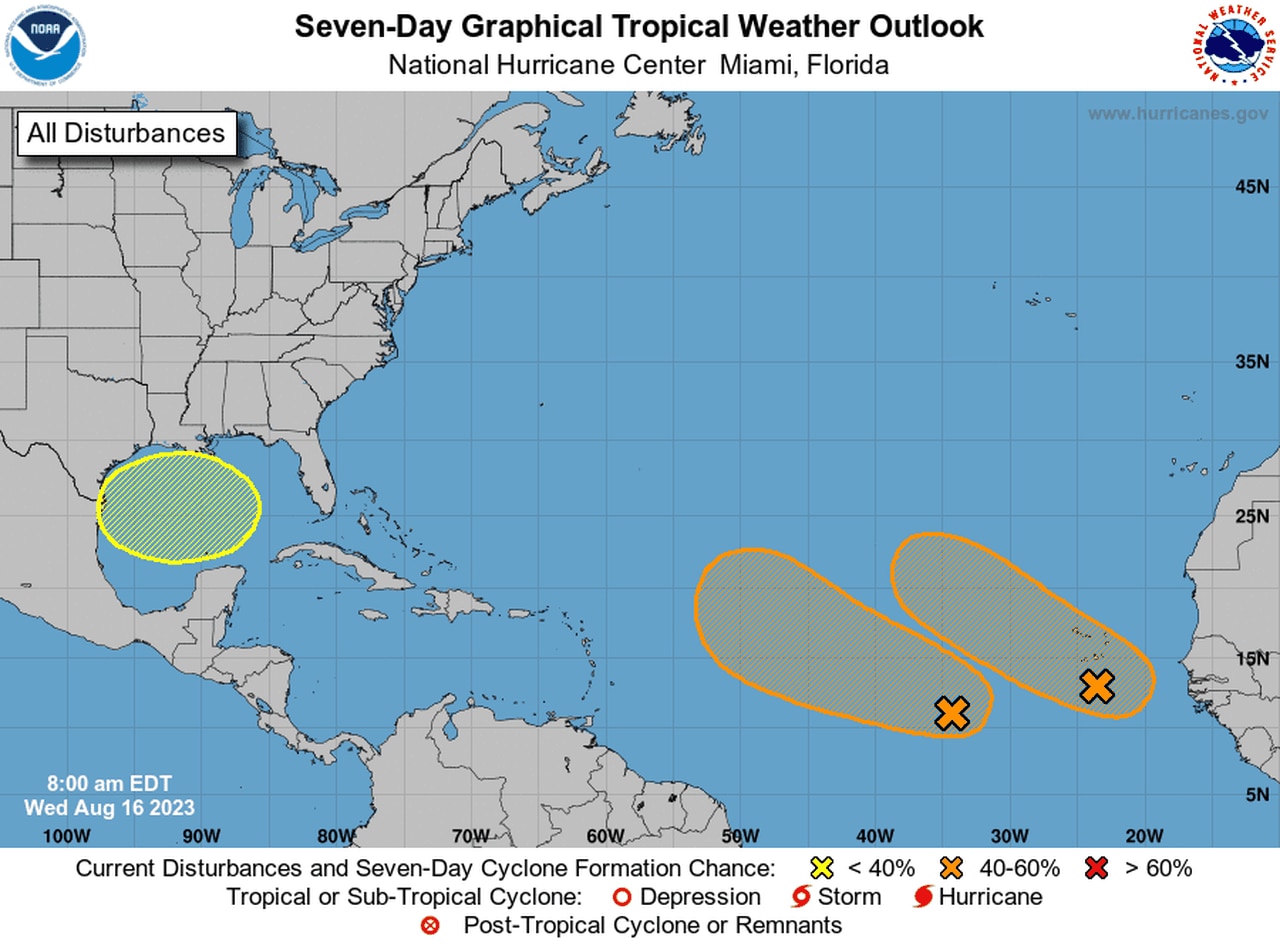Tropical trouble in the Gulf? Where to watch this week
The tropical Atlantic has been quiet as the peak of hurricane season approaches. But will it stay that way?
The National Hurricane Center was monitoring three areas for potential development on Wednesday — and one of them was in the Gulf of Mexico.
The hurricane center said an area of low pressure could form in the central or western Gulf by the beginning of next week.
Forecasters said it could develop slowly after that as it tracks to the west “potentially nearing the western Gulf of Mexico coastline in about a week.”
The hurricane center gave the soon-to-be system a 20 percent probability of becoming a tropical depression in the next seven days.
The hurricane center was also tracking two other tropical waves farther out in the Atlantic — and both have medium chances of becoming tropical depressions.
It’s too soon to say if either would eventually become a concern for the U.S.
The first one, which on Wednesday was over the central Atlantic about 750 miles west-southwest of the Cabo Verde Islands, has a 50 percent chance of becoming a tropical depression in the next week. It was disorganized as of Wednesday, but the hurricane center said conditions were favorable for gradual development.
Forecasters said a tropical depression could form over the next several days as the disturbance tracks to the west or west-northwest at about 10 mph.
The second disturbance was moving off Africa’s west coast on Wednesday. It is also forecast to track to the west-northwest over the next few days, and an area of low pressure could form when it is just to the west of the Cabo Verde Islands.
The hurricane center said it could become a tropical depression over the weekend — but conditions could turn unfavorable by early next week.
It has a 40 percent chance of becoming a tropical depression in the next seven days.
There hasn’t been a named storm in the Atlantic since the demise of Don, which was briefly a hurricane in the central Atlantic in mid-July but never affected land.
There have also been three tropical storms so far this season as well as an unnamed subtropical storm in January.
The Atlantic hurricane season’s climatological peak is less than a month away on Sept. 10. NOAA is forecasting that the rest of the season could be busy thanks to record-warm sea surface temperatures in the tropics.
NOAA’s updated hurricane outlook, released last week, calls for 14-21 named storms, six to 11 hurricanes and two to five major hurricanes. That’s an increase from the early-season outlook released in May.
NOAA put 70 percent confidence in those numbers, and they include storms that have already formed this season.
According to NOAA an average season in the Atlantic basin has 14 named storms, seven hurricanes and three major hurricanes.
The Atlantic hurricane season will come to a close on Nov. 30.
